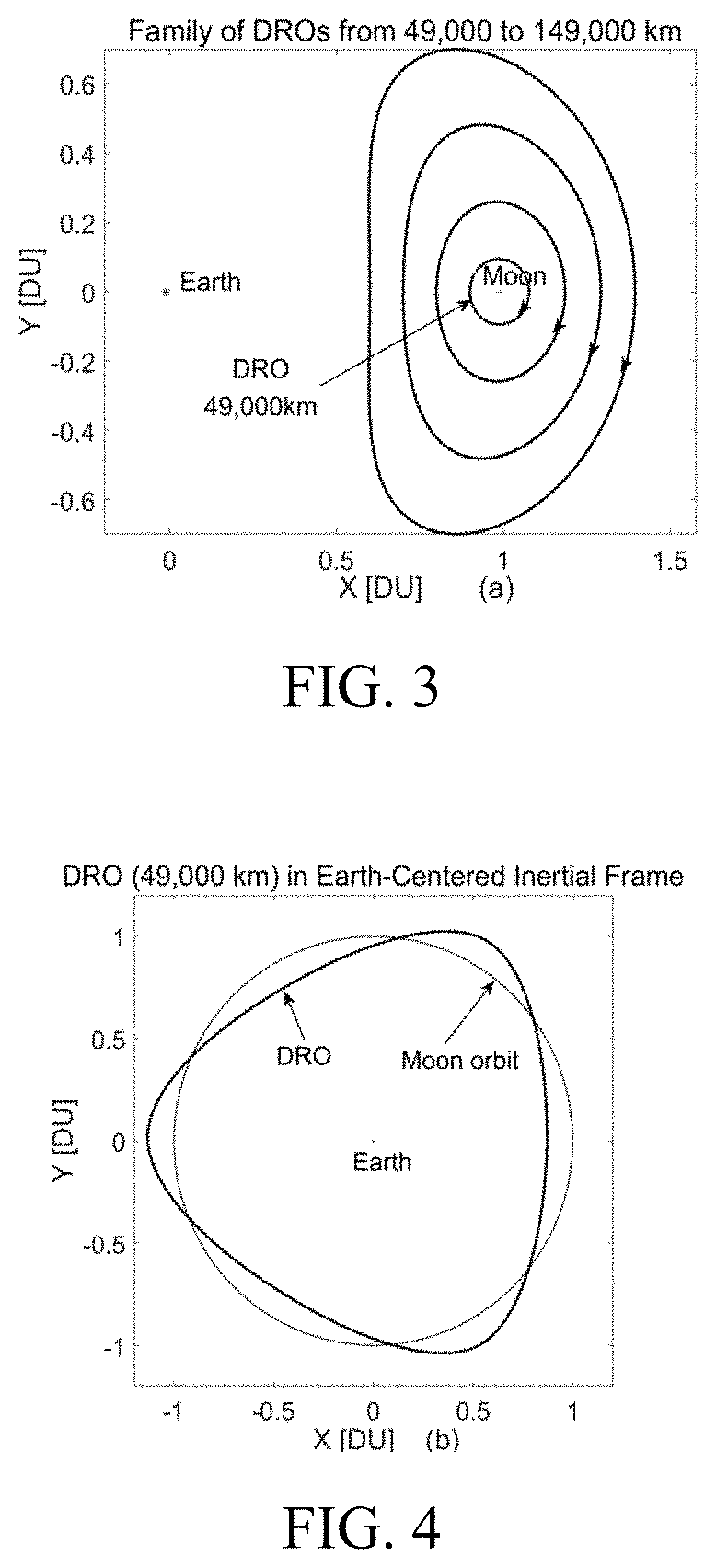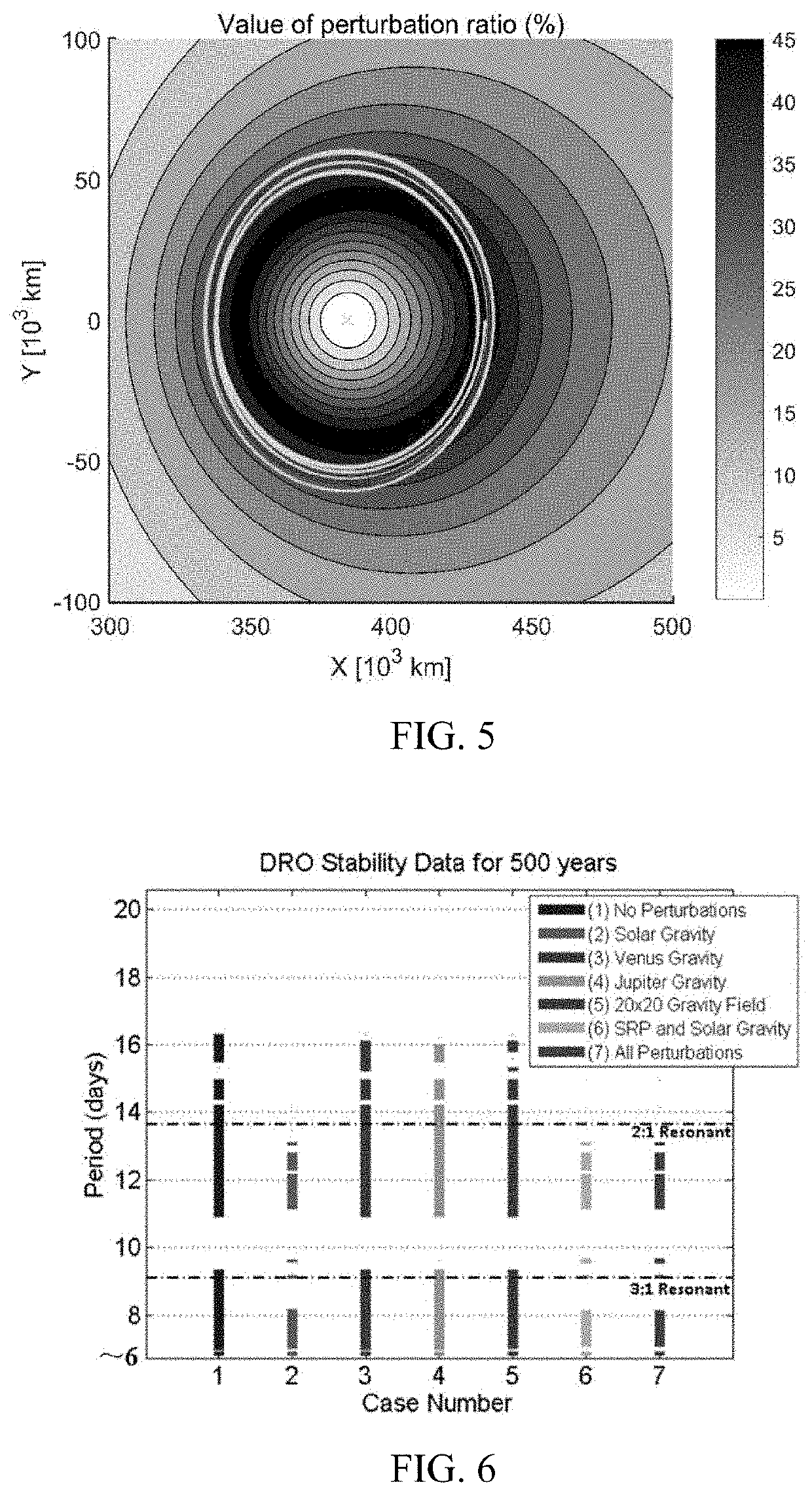Method for achieving space-based autonomous navigation of global navigation satellite system (GNSS) satellites
a global navigation satellite and satellite technology, applied in the field of satellite navigation technologies, can solve the problems of slow change of conventional satellite-ground measurement geometry, affecting the positioning and timing accuracy of navigation satellites, and affecting the accuracy of navigation signals, so as to reduce orbital maintenance costs and facilitate navigation calculation. , the effect of long-term stability
- Summary
- Abstract
- Description
- Claims
- Application Information
AI Technical Summary
Benefits of technology
Problems solved by technology
Method used
Image
Examples
embodiment 1
[0079]This embodiment provides a method for achieving GNSS-based autonomous navigation of a space segment satellite, as shown in FIG. 1, including the following steps.
[0080]S1: Optimize an earth-moon space DRO, and establish a dynamic model of an earth-moon space satellite orbit.
[0081]S2: Establish measurement links, by an LEO data relay satellite, with an earth-moon space DRO satellite and a GNSS satellite respectively, and measure an inter-satellite distance for modeling and linearization.
[0082]S3: Adopt an extended Kalman filter (EKF) method to process inter-satellite measurement data, and autonomously determine a position and velocity of the GNSS without depending on the ground measurement and control support.
[0083]Specifically, earth-moon DROs with periodic characteristics are deduced from a CRTBP model. DROs are usually expressed in an earth-moon rotating coordinate system, the origin is the earth-moon center of mass, the X axis points from the center of the earth to the cente...
embodiment 2
[0117]In this embodiment, the steps of the method in Embodiment 1 are used to perform simulation scene experiment determination:
[0118]The simulation time is set at 0:00 on Jan. 1, 2018 (UTC time), and the simulation time is 14 days. A DRO preferred in Embodiment 1 is selected, with a plane amplitude of 49000 km in the earth-moon rotating coordinate system. Table 1 gives an initial state of the DRO in an earth-centered inertial J2000 coordinate system. The LEO orbit selected is a nearly circular orbit with an altitude of 400 km and an inclination angle of 43°. The initial state is shown in Table 2.
TABLE 1Initial state of DROs in a J2000 coordinate systemX [km]Y [km]Z [km]Vx [km / s]Vy [km / s]Vz [km / s]−20018.812298708.811126160.3201.2636560.1987100.182677
TABLE 2Initial value state of orbits of LEO data relay satellitesRight Semi-ascensionArgument majorInclinationof ascendingofTrueaxisEccen-anglenodeperigeeanomaly[km]tricity[deg][deg][deg][deg]LEO6778.1400.00243.00.00.00.0
[0119]Taking a G...
PUM
 Login to view more
Login to view more Abstract
Description
Claims
Application Information
 Login to view more
Login to view more - R&D Engineer
- R&D Manager
- IP Professional
- Industry Leading Data Capabilities
- Powerful AI technology
- Patent DNA Extraction
Browse by: Latest US Patents, China's latest patents, Technical Efficacy Thesaurus, Application Domain, Technology Topic.
© 2024 PatSnap. All rights reserved.Legal|Privacy policy|Modern Slavery Act Transparency Statement|Sitemap



